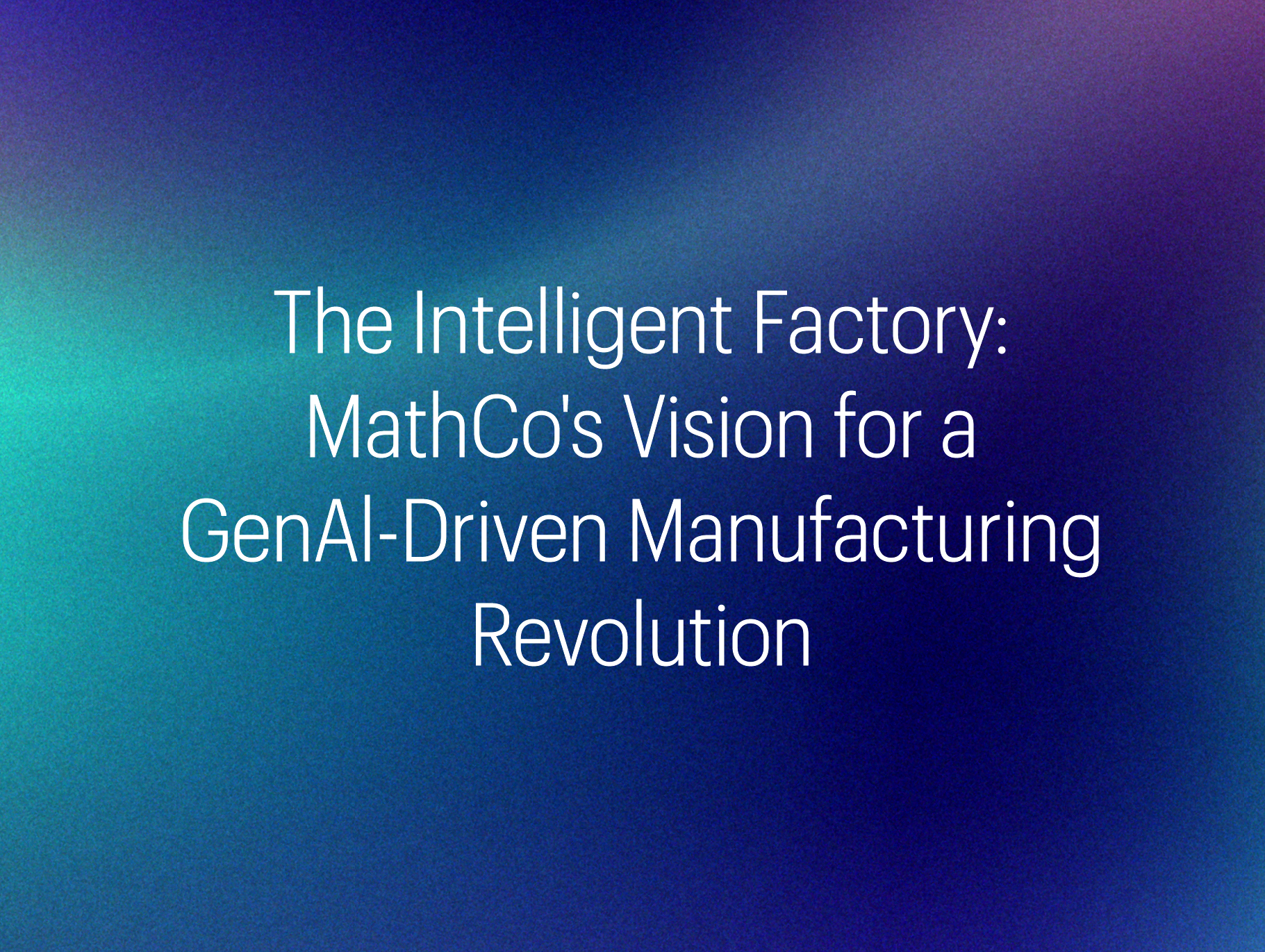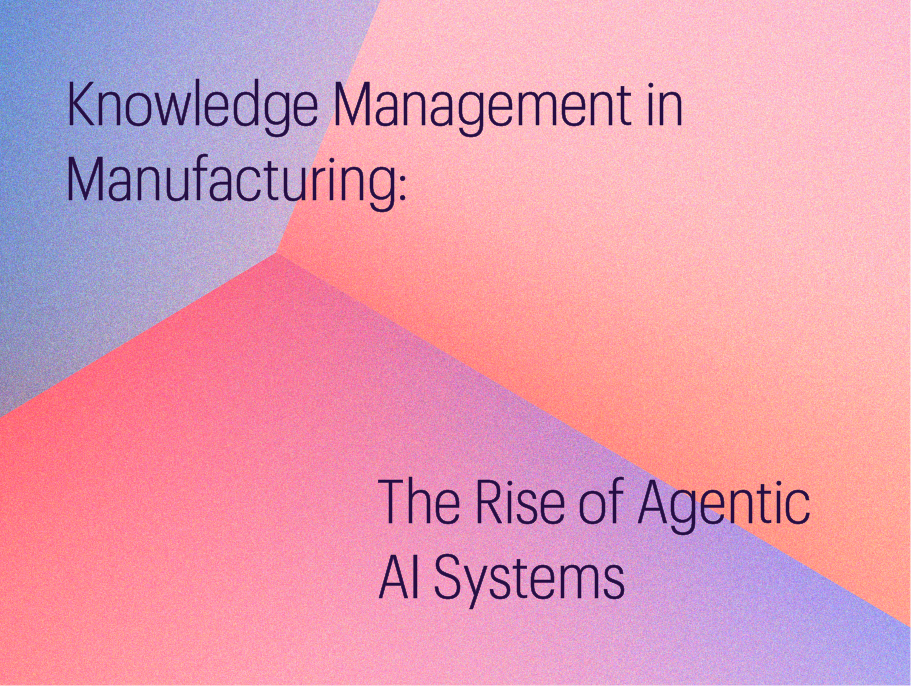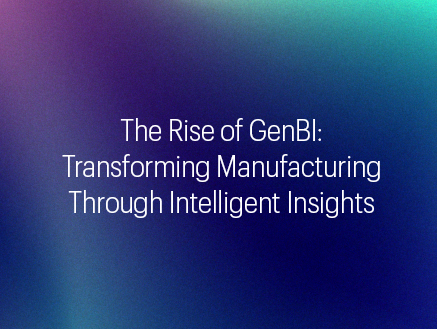The downstream Oil and Gas industry is navigating a perfect storm of market volatility, tightening regulations, an aging workforce, and decarbonization imperatives. Maintaining asset reliability, ensuring supply continuity, and managing workforce transitions have become existential challenges.
As organizations navigate increasing complexity, intelligent systems and AI are emerging as the foundation of a new operating model. Refineries are moving beyond fragmented digital pilots to enterprise-wide AI ecosystems that drive measurable performance, predicting failures before they happen, optimizing supply chains in real time, and empowering a data-augmented workforce. Those who act now are not just improving efficiency, they are future-proofing their operations for a low-carbon, high-performance era.
The Two Pillars of AI-Led Transformation
Industrial enterprises today face a defining challenge of balancing reliability, efficiency, and agility in an environment of rising complexity. The next frontier is an intelligent ecosystem, where AI anticipates disruption, optimizes performance, and enables operations that are self-healing, adaptive, and continuously improving.
At the core of this transformation are two foundational pillars that redefine how industrial organizations think about performance and resilience:
- Predictive Maintenance & Asset Reliability: Harnessing AI to anticipate equipment failure, extend asset life, and create autonomous maintenance systems.
- Supply Chain Optimization & Workforce Agility: Leveraging predictive intelligence to orchestrate production, logistics, and human resources in real time.
Predictive Maintenance & Asset Reliability: From Reactive to Self-Healing
Operational downtime in refineries results in substantial financial losses. One failed compressor or heat exchanger can cascade into millions of lost output and unplanned maintenance. Traditional rule-based systems react after the fact. AI flips this paradigm.
Machine learning models now synthesize IoT sensor data to detect anomalies in temperature, pressure, and vibration long before failure occurs. Predictive analytics prioritize interventions, optimize maintenance windows, and align repairs with production schedules. The result is extended asset life, lower maintenance costs, and higher uptime.
But the transformation extends beyond machines. Intelligent scheduling tools apply the same predictive logic to workforce planning, forecasting labor needs, aligning skillsets with maintenance cycles, and automating shift allocation. The “augmented operator” supported by AI copilots providing real-time recommendations and decision support.
Case in point: A global manufacturer partnered with MathCo to deploy a predictive maintenance framework that cut equipment failures by 40% and saved $1M annually. The same approach, scaled to refinery operations, can turn reactive maintenance into a self-healing ecosystem where humans and AI collaborate for peak reliability.
Supply Chain Optimization: From Disruption to Dynamic Agility
The downstream supply chain is under relentless stress. Volatile crude prices, shifting demand, congested ports, and geopolitical uncertainty. Static planning can’t keep pace with real-world complexity. AI-driven optimization can.
Advanced machine learning models now forecast demand with precision across global markets. Real-time optimization engines continuously adjust product blending, storage, and logistics, balancing cost, emissions, and delivery commitments. When disruptions hit, AI-enabled platforms automatically reroute shipments, reoptimize refinery outputs, and communicate new delivery timelines across the network.
Workforce planning is integral to this agility. AI synchronizes human and machine availability, optimizing shift patterns, ensuring safety coverage, and anticipating labor gaps before they disrupt operations. The result is an adaptive ecosystem where people, processes, and technology move in lockstep.
Case in point: A global energy technology firm used MathCo’s predictive intelligence platform to unify fragmented workforce and logistics data. The solution reallocated budgets to boost in-house hiring by ~5%, corrected 65,000+ hours of utilization imbalance, and established a feedback loop ensuring data consistency and reliable workforce planning.
Toward an Intelligent Industrial Ecosystem
When predictive maintenance and supply chain intelligence converge, they create a connected intelligence layer across the enterprise. Data flows seamlessly from assets to operators to decision-makers, driving:
- End-to-end visibility: Real-time insights into asset health, production status, and supply dynamics.
- Adaptive performance optimization: Dynamic balancing of resources and workflows based on evolving conditions.
- Continuous learning: Systems that improve themselves through feedback loops and historical data analysis.
Building on the Foundations of Predictive Intelligence
These are not just the two pillars of AI-led transformation; they represent the most practical and high-impact points for organizations embarking on their AI journey. Positioned at the intersection of abundant operational data and measurable business outcomes, these domains enable organizations to realize tangible value quickly. These outcomes drive rapid improvements in ROI, productivity, and operational efficiency, serving as compelling proof points that accelerate organizational confidence and commitment to broader AI adoption.
Beyond efficiency and cost reduction, the strategic significance of these initiatives lies in how they fundamentally change how operations function and adapt. Predictive systems empower frontline teams with actionable insights, enhance decision-making across leadership levels, and embed resilience at every level of the enterprise. As these AI-driven capabilities mature, they evolve from isolated solutions into an intelligent ecosystem, one that continuously learns, adapts, and self-optimizes in response to change. The two pillars lay the groundwork for enterprise-wide scalability, creating a foundation for enduring performance, adaptability, and responsible, data-driven growth in the age of intelligent industry.
The Road Ahead: AI as the Backbone of Downstream Transformation
Generative AI will augment human expertise, producing actionable insights, predictive scenarios, and operational innovations that were previously inconceivable. Agentic AI will enable autonomous decision-making, driving self-healing maintenance systems, dynamic workforce allocation, and adaptive safety protocols that anticipate and mitigate risk before it occurs
At MathCo, we believe the true future of AI lies in its ability to become systemic, not just a collection of intelligent tools, but a seamlessly integrated intelligence layer that connects and orchestrates every level of enterprise operations. Systemic AI empowers organizations to unify decision-making across functions, enabling end-to-end optimization, from refining and production to supply chain logistics in near real time while continuously enhancing performance, resilience, and strategic foresight across the downstream value chain.
In our latest white paper, we explore this new paradigm in depth. Learn how leading organizations are moving beyond fragmented pilots to build cohesive, context-aware AI ecosystems that scale with purpose and impact. The white paper highlights the frameworks, success stories, and practical strategies shaping the next frontier of enterprise AI and demonstrates how Systemic AI can turn ambition into measurable, enterprise-wide transformation.

The Intelligent Factory: MathCo’s Vision for a GenAI-Driven Manufacturing Revolution

